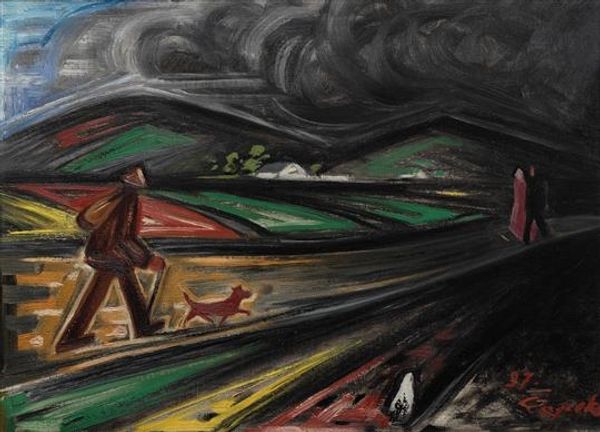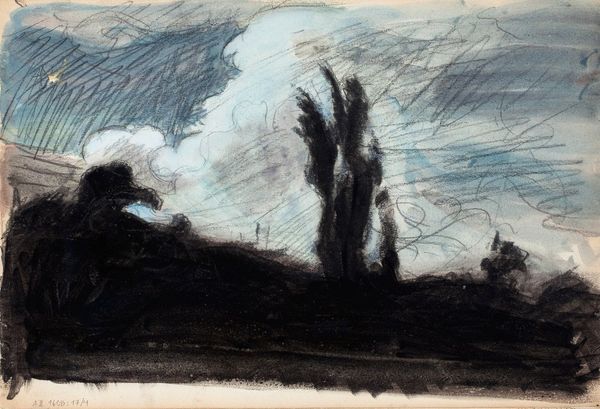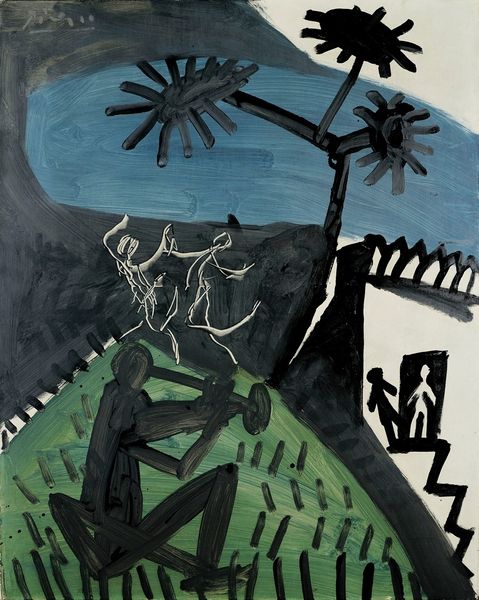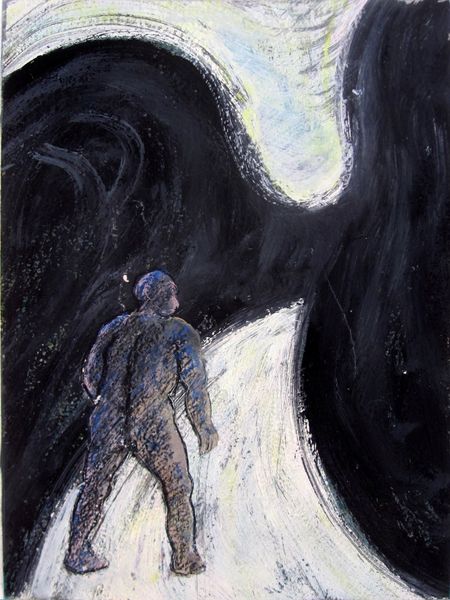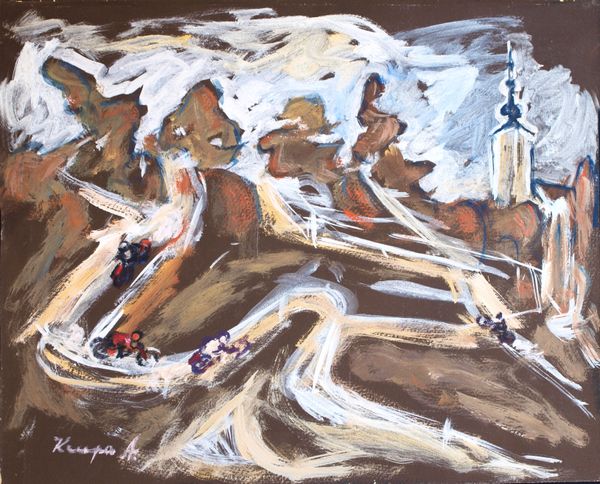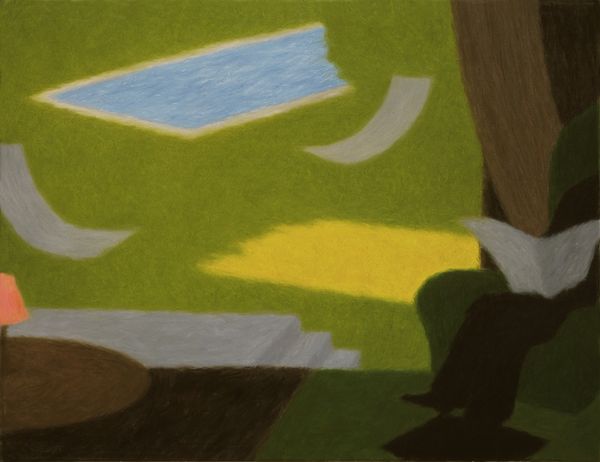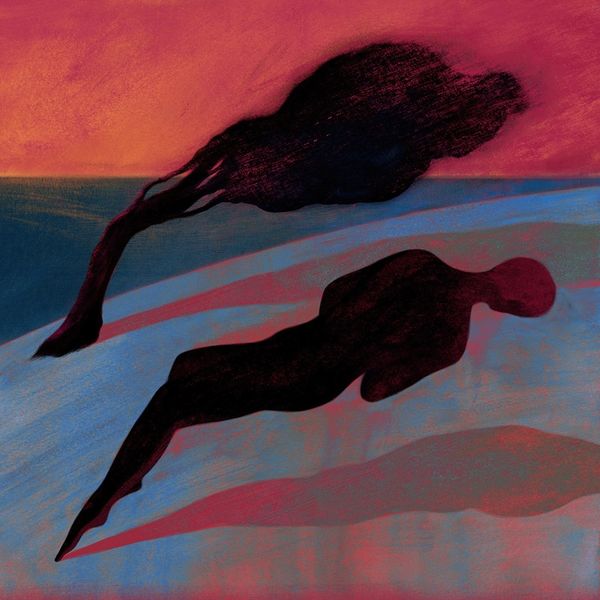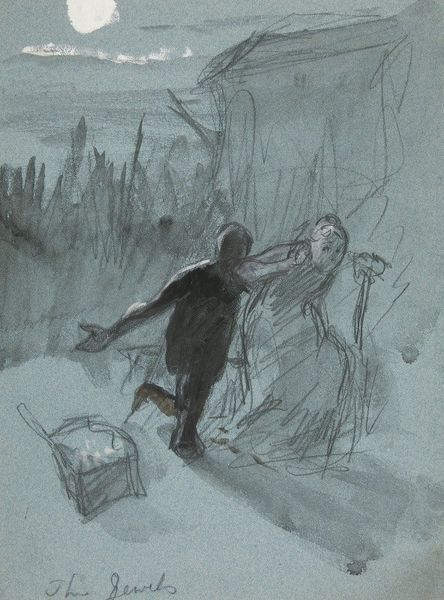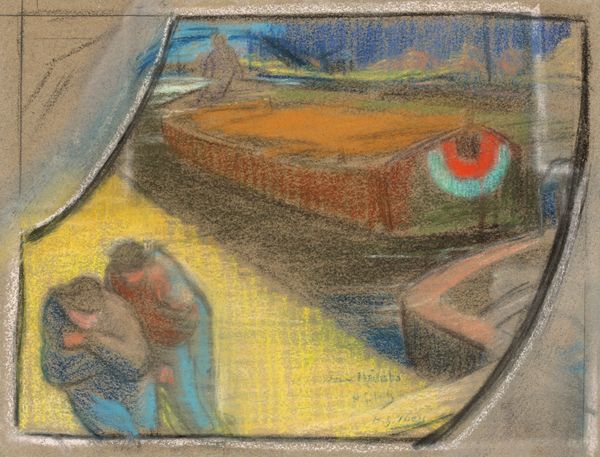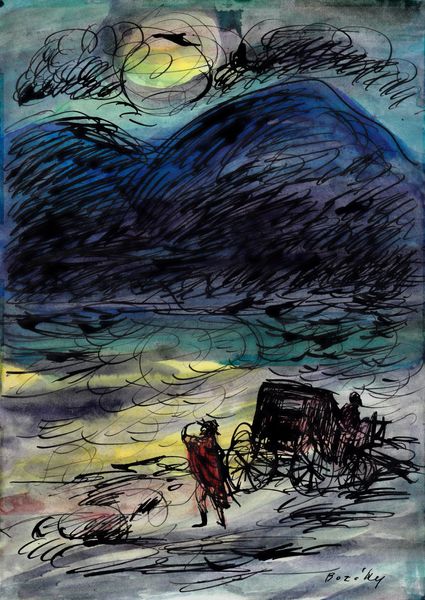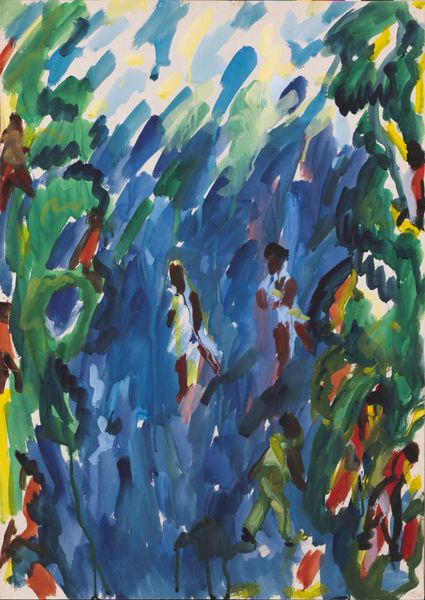
painting
#
abstract painting
#
painting
#
landscape
#
figuration
#
naive art
#
genre-painting
Copyright: Public domain
Curator: Here we have Josef Capek’s “Fisherman at Dusk,” painted in 1938. The work demonstrates Capek’s signature figuration style. Editor: My immediate response is that of melancholy. The severe brushstrokes create this feeling—particularly how the darkness seems to swallow up the figures, dwarfing them against nature’s immensity. Curator: Absolutely, Capek uses stark blues and blacks to delineate form and space, eschewing traditional perspective for a more emotionally resonant composition. The repeated angles almost resemble religious iconography. Editor: Yes, the angling figure almost becomes a cruciform shape. Fishing itself is replete with symbolic significance, from biblical narratives to archetypal quests of searching and catching, wrestling with fate itself. I see undertones of human struggle amidst this raw environment. Curator: Note how the abstracted landscape reduces natural forms to near geometric planes. Capek’s restricted palette underscores the painting’s construction, heightening its aesthetic effect. We cannot forget that the artwork's intrinsic value also exists outside of its cultural content. Editor: Yet this reduction to simplified shapes only strengthens its impact! It is almost primal. Think of humankind against an unknown backdrop. Blue often signals the Virgin’s robes, too. Does this reflect his concerns of the coming storm and cultural shifts brewing pre-war? Curator: Intriguing, considering the piece dates to 1938. The visible brushstrokes lend a tactile, almost urgent quality to the work, emphasizing the materiality of the paint itself and drawing attention to its two-dimensionality as an artwork first and foremost. Editor: So true! That vibrant sky could become either salvation or downfall for our dark figures navigating the depths of the soul’s experience of change and turbulence… Capek masterfully renders emotional narrative accessible even to this day. Curator: Agreed, “Fisherman at Dusk” succeeds on formal terms by reducing its theme into potent visual arrangement but you are also spot on! The art of interpretation often resides within one's soul - rendering all the most powerful statements about what endures as art across centuries.
Comments
No comments
Be the first to comment and join the conversation on the ultimate creative platform.
